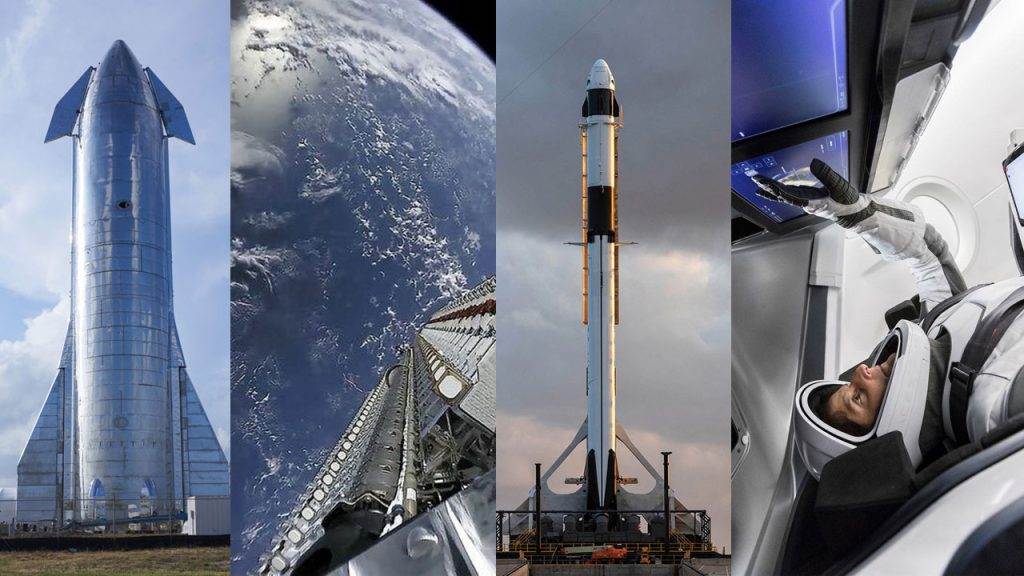By Dale Skran
Having just written a 2020 SpaceX year in review wrap up (which included a preview of 2021), I thought it would be fun to go back and look at the 2020 Space X preview I wrote a year ago and see how accurate it was. I’ve included the entire text of the 2020 preview, along with retrospective comments in italics.
- January 11, 2020: The in-flight abort test that supports the Commercial Crew program. This test was delayed out of 2019 by the need to recover from the loss of a Dragon 2 capsule in a ground test.
- Total success.
- Multiple “fourth” flights of F9 first stages, starting with a Starlink launch on Jan. 7th, and the in-flight abort test Jan. 11th.
- More than total success, with 2020 ending up with two 7th F9 first stage flights.
- March 2020: CRS-20 will be the final flight to the ISS under the first CRS contract, a significant milestone.
- Nailed it.
- August 2020: CRS2 first cargo flight with a Dragon 2 to the ISS, the 21st overall SpaceX cargo run to the ISS. A second CRS2 flight is expected later in 2020.
- This seems to be 50% correct; the first flight occurred in December rather than August, and the second CRS2 flight was deferred to 2021.
- Sometime in Q2-Q3 2020 the first crewed Dragon 2 flight to the ISS. All eyes will be on this one.
- Big success here.
- A whole big lot of Starlink launches, perhaps more than 12. Expect a lot of controversy as SpaceX’s competitors feel the heat and as astronomers work with SpaceX to adjust to the new age of the mega-constellation.
- Expectations exceeded with 14 Starlink flights. The controversy was more muted than I expected, due to a combination of the relative success of the SpaceX sunshade in reducing the visibility of the satellites and the distraction of a worldwide pandemic.
- Two GPS launches for the Air Force.
- Spot on with this one.
- A Falcon Heavy launch of a large Air Force satellite, AFSPC-44, to GEO.
- A total miss here – this flight was deferred to 2021.
- The SpaceX rideshare program offering monthly launches starting at $1M should start in March 2020. This program is expected to have an enormous impact on lowering the cost and increasing the frequency by which payloads reach space. SpaceX will make use of up to three dedicated flights out of Vandenberg per year plus excess capacity on the numerous Starlink launches.
- I’m rating this as 50%. There were three SpaceX rideshares piggybacked with Starlinks, but all dedicated rideshare flights were deferred to 2021.
- An overall total of 30 or more launches. Even if SpaceX falls short, there is a very good chance 2020 will be a record launch year for SpaceX.
- Going with 75% here – there were 26 successful flights rather than 30, but this was still a new record for SpaceX.
- Assuming continued success, the Falcon 9 will surpass the Atlas V record for consecutive successful launches in 2020. With the coming transition by ULA from the Atlas V to Vulcan, SpaceX will with high probability have the “quality lead” over all other launch providers in the near future.
- Close but no cigar here. At the end of 2020, Falcon 9 and Atlas V both have 75 consecutive successful launches, a dead heat. With the much higher F9 launch rate, we can expect Falcon 9 to leave Atlas V in the dust in 2021.
- With the high launch rate, we can expect SpaceX will push to reduce turnaround time in all aspects of the launch cycle. This higher launch rate will put pressure on the Florida ranges to keep up. One way SpaceX will achieve this higher launch rate is with more reuse, so we may see a 5th or even a 6th flight of the same F9 first stage.
- Smashed this prediction with two 7th flights of a F9 first stage!!!
- Initial operating capability for Starlink in the second half of the year.
- Going with 50% here since although Starlink has an active beta test program, it would not be accurate to stay initial operating capability has been achieved.
- And last but not least, the first flights of Starship. This is the high-risk part of what SpaceX is doing in 2020, so I would not be surprised to see a few explosions over Boca Chica. However, by EOY 2020, we can anticipate significant Starship/Superheavy progress.
- This prediction was sufficiently vague that we have to rate it as fully achieved – there were both multiple test flights and multiple explosions.
Conclusion: Overall I think my 2020 preview stood up well. The one thing missing was a Falcon Heavy flight, but 2020 was surely the best year yet for SpaceX, an even greater achievement when one considers that this was in the context of the worst pandemic since the 1918 flu outbreak.
Copyright 2021 by Dale Skran
Image at top, from left: Starship prototype, Starlink satellites in orbit about to be deployed, Dragon 2 on the launch pad, and Astronaut Sunita Williams testing a Dragon 2 simulator while wearing a SpaceX spacesuit.



















